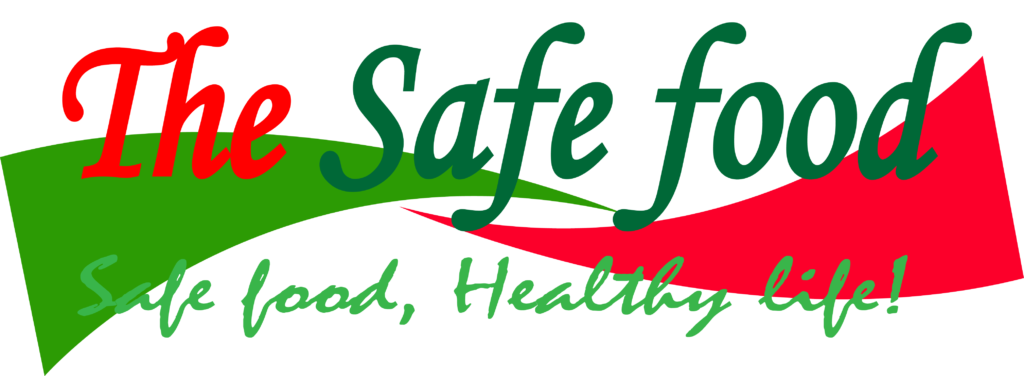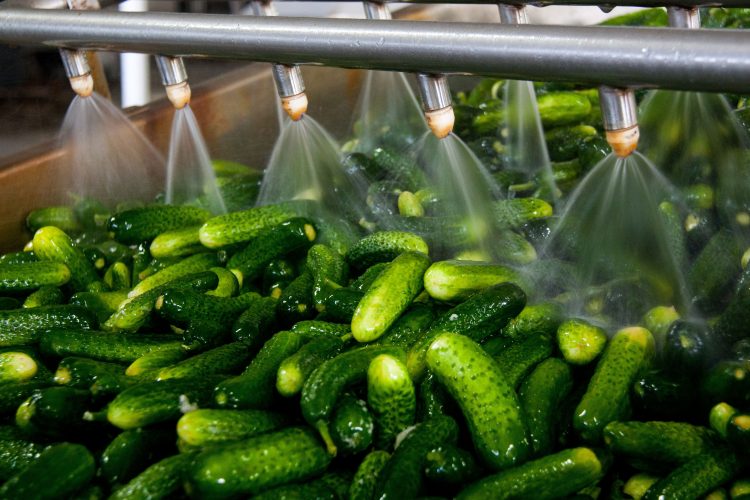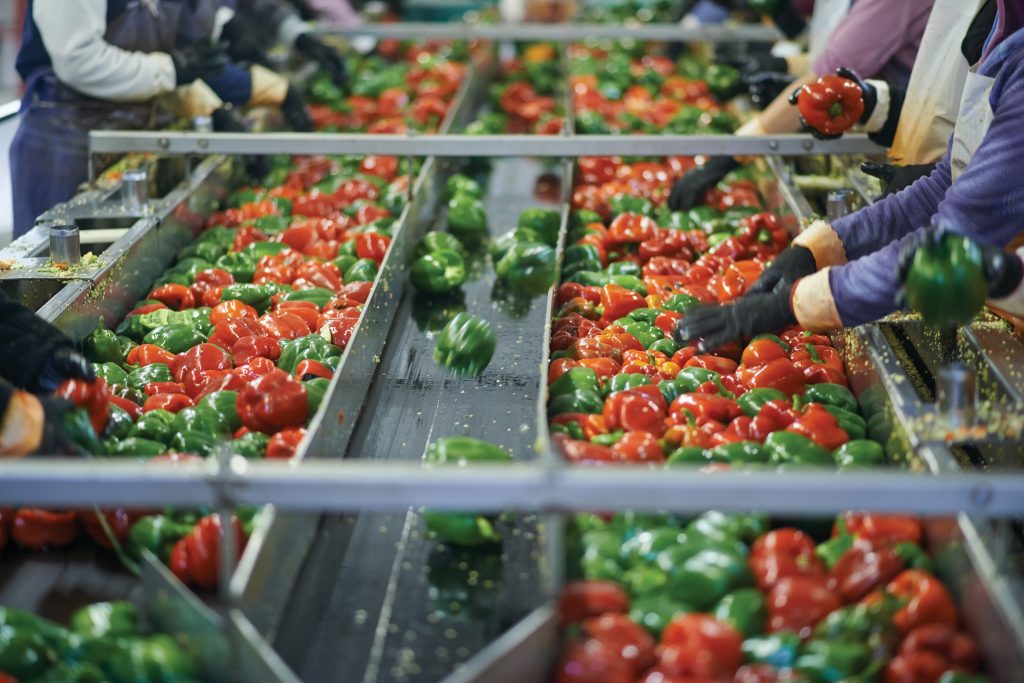
Highlights
- Food preservation refers to techniques and processes used to extend the shelf life of food products and maintain their quality, safety, and nutritional value.
- Traditional methods of food preservation include drying, smoking, salting, and fermenting, which leverage natural processes to inhibit the growth of microorganisms that cause spoilage.
- Modern methods of food preservation include sterilization, pasteurization, freezing, modified atmosphere packaging (MAP), high-pressure processing (HPP), pulsed electric field (PEF) technology, and irradiation.
Food safety knowledge is for all!

Every consumer deserves to have high quality and safe food. …Read more!

What is food preservation?
Food preservation refers to the set of techniques and processes used to extend the shelf life of food products and maintain their quality, safety, and nutritional value. It involves various methods, both traditional and modern, that aim to inhibit or slow down the growth of microorganisms, enzymes, and chemical reactions responsible for spoilage and deterioration.
Food preservation is a crucial aspect of our daily lives. It allows us to extend the shelf life of perishable items, ensuring that we have access to a variety of foods even when they are out of season or in limited supply. The science behind food preservation is a fascinating field that involves understanding the various methods and techniques that can be employed to keep food fresh and safe to consume for an extended period.
In this article, we will explore the science behind food preservation and delve into the different ways you can make your food last longer. We will discuss the underlying principles, such as controlling microbial growth, slowing down enzymatic reactions, and minimizing oxidation, which play pivotal roles in preserving food. By understanding these scientific concepts, you will be able to employ effective strategies to prolong the lifespan of your food, reduce waste, and ensure optimal food quality and safety.

We will explore both traditional and modern methods of food preservation. Traditional methods, which have been used for centuries, include techniques like drying, smoking, salting, and fermenting. These methods leverage natural processes to inhibit the growth of bacteria, molds, and other microorganisms that cause food spoilage. On the other hand, modern preservation techniques utilize advancements in technology and scientific understanding to provide innovative ways of extending shelf life, such as canning, pasteurization, freezing, and vacuum sealing.
Throughout this article, we will discuss the scientific principles behind each preservation method, explaining how they work and the specific conditions required for success. We will also touch upon the benefits and limitations of each technique, as well as provide practical tips on how to effectively apply them in your day-to-day life.
By gaining insights into the science behind food preservation and learning how to apply these techniques, you will not only be able to enjoy a wider variety of foods throughout the year but also contribute to reducing food waste and promoting sustainable consumption. So, let’s dive into the fascinating world of food preservation and discover the secrets behind making your food last longer.
Traditional Method
As mentioned earlier, traditional methods, which have been used for centuries, include techniques like drying, smoking, salting, and fermenting. These methods leverage natural processes to inhibit the growth of bacteria, molds, and other microorganisms that cause food spoilage.
Drying
Drying is one of the oldest and simplest methods of food preservation. It involves removing moisture from food items, thereby inhibiting the growth of bacteria, yeasts, and molds that require moisture to survive and cause spoilage. This method is commonly used for fruits, vegetables, herbs, meats, and fish.
How the Method Achieves Food Preservation, Safety, and Quality
- Preservation: Drying reduces the moisture content of food, making it an inhospitable environment for microorganisms. By removing moisture, the enzymatic reactions that cause spoilage and degradation are slowed down or halted altogether. This extends the shelf life of the food and allows it to be stored for long periods without refrigeration.
- Safety: Drying helps eliminate water-dependent bacteria, such as those responsible for causing foodborne illnesses. However, it’s important to note that drying alone may not kill all microorganisms, especially heat-resistant pathogens. Therefore, it is recommended to combine drying with other safety measures such as proper handling, storage in a clean environment, and packaging to prevent recontamination.
- Quality: Properly dried foods retain their nutritional value and flavor. However, the drying process can affect the texture and taste of some foods. Careful control of drying temperature and time is essential to maintain the desired quality. Over-drying can result in a loss of flavor, texture, and nutrients, while under-drying can lead to microbial growth and spoilage.
Smoking
Smoking is a method of food preservation that involves exposing food to smoke from burning or smoldering materials, such as wood chips or herbs. This technique has been used for centuries to preserve and enhance the flavor of various food items, especially meats and fish.
How the Method Achieves Food Preservation, Safety, and Quality:
- Preservation: Smoking achieves preservation through multiple mechanisms. First, smoke contains compounds, such as phenols and organic acids, which have antimicrobial properties. These compounds help inhibit the growth of bacteria and other microorganisms that cause spoilage. Second, the heat generated during smoking can kill or deactivate certain bacteria and enzymes. Lastly, the process of smoking also dehydrates the food, reducing its moisture content and making it less susceptible to microbial growth.
- Safety: Smoking can enhance food safety by reducing the risk of microbial contamination. The combination of heat, smoke compounds, and dehydration helps create an environment unfavorable for bacterial growth. However, it’s important to note that smoking alone may not guarantee complete safety. Proper handling, cooking, and storage practices are still essential to prevent foodborne illnesses. Additionally, smoked foods should be consumed within a reasonable time frame to ensure freshness and minimize the risk of spoilage.
- Quality: Smoking imparts a distinct smoky flavor and aroma to food, enhancing its sensory appeal. The compounds present in the smoke can penetrate the surface of the food, infusing it with unique flavors. However, the quality of smoked food depends on several factors, including the type of wood or herbs used for smoking, the duration of smoking, and the temperature control during the process. Careful attention to these factors is necessary to achieve the desired flavor and prevent the food from becoming overly smoked or bitter.
Curing/ Salting
Salting is an ancient method of food preservation that involves applying salt to food items, typically meats, fish, and vegetables. Salt draws out moisture from the food, creating an inhospitable environment for microorganisms and inhibiting their growth.
How the Method Achieves Food Preservation, Safety, and Quality
- Preservation: Salt helps in preservation by reducing the water activity in the food. When salt is applied to the surface of the food, it draws out moisture through osmosis. The low water activity inhibits the growth of bacteria, yeasts, and molds, preventing spoilage. Salt also helps to preserve the texture of food by firming it up and inhibiting enzymatic reactions that can lead to degradation.
- Safety: Salting contributes to food safety by inhibiting the growth of microorganisms. The high salt concentration creates an inhospitable environment that is unfavorable for bacterial growth. However, it is important to note that salting alone may not completely eliminate pathogens. Proper handling, storage, and cooking practices are still necessary to ensure food safety.
- Quality: Salting can enhance the flavor of food by adding a savory and slightly salty taste. It can also contribute to the development of specific textures and mouthfeel in certain food products. However, excessive salting can lead to an overly salty taste, affecting the overall quality. Finding the right balance of salt is crucial to maintain the desired flavor and palatability.

Fermentation
Fermentation is a time-honored method of food preservation that harnesses the activity of beneficial microorganisms, such as bacteria, yeasts, or molds, to transform the properties of food. This process involves breaking down complex compounds into simpler ones through enzymatic reactions, resulting in the preservation and development of unique flavors, textures, and nutritional profiles.
How the Method Achieves Preservation, Safety, and Quality
- Preservation: Fermentation achieves preservation through the action of beneficial microorganisms. These microorganisms produce compounds like lactic acid, acetic acid, and alcohol, which create an acidic or alcoholic environment. The low pH and presence of antimicrobial substances hinder the growth of harmful bacteria and other spoilage microorganisms, thus preserving the food. Additionally, some fermentation processes produce compounds that have natural preservative properties, further enhancing the preservation effect.
- Safety: Fermentation can contribute to food safety by creating conditions that are unfavorable for the growth of pathogenic bacteria. The acidic environment inhibits the growth of harmful microorganisms, reducing the risk of foodborne illnesses. However, it’s important to note that not all fermented foods are inherently safe. Proper sanitation, hygiene, and adherence to specific fermentation techniques and timeframes are necessary to ensure safety.
- Quality: Fermentation can significantly impact the flavor, texture, and aroma of food. The metabolic activities of the microorganisms during fermentation generate various compounds that contribute to unique and desirable sensory characteristics. Fermentation can enhance the nutritional value of food by increasing the bioavailability of certain nutrients, breaking down complex molecules, and producing beneficial by-products, such as vitamins, probiotics, and enzymes.
Modern methods of food preservation
Food preservation through sterilization
Sterilization is a food preservation method that aims to eliminate all viable microorganisms, including bacteria, yeasts, and molds, from a food product. It involves subjecting the food to high heat or pressure to achieve complete microbial destruction. Sterilization is commonly used in the canning industry to ensure long-term shelf stability of low-acid foods, such as canned meats and vegetables. The process typically involves heating the food to temperatures above 100°C (212°F) for an extended period.
Sterilization achieves preservation, safety, and quality by effectively eliminating all microorganisms, including harmful pathogens, and enzymes that can cause spoilage. The high heat or pressure destroys microbial cells, their DNA, and enzymes, rendering the food safe for long-term storage. Sterilization also helps maintain the nutritional value and quality of the food, as the high temperatures are carefully controlled to minimize detrimental effects on taste, texture, and nutrient content.
Food preservation through pasteurization
Pasteurization is a heat treatment process that aims to reduce the number of microorganisms in a food product, while still retaining some beneficial or desirable microorganisms. It involves heating the food to a specific temperature for a predetermined period, followed by rapid cooling. Pasteurization is commonly used for milk, juices, and other heat-sensitive beverages.
Pasteurization achieves preservation, safety, and quality by significantly reducing the microbial load while maintaining the sensory and nutritional attributes of the food. Pasteurization should target to destroy pathogenic microorganisms hence making the food safe. For instance, in milk, pasteurization is donewith the aim of destroying Mycobacterium tuberculosis as well as Corxiella brunetii.
The heat treatment kills or inactivates pathogens and spoilage microorganisms, making the product safer for consumption and extending its shelf life. Pasteurization also helps preserve the natural flavors, vitamins, and enzymes to a greater extent compared to sterilization, as the milder heat treatment minimizes potential damage to the food’s properties.
Food preservation through freezing
Freezing is a widely used modern method of food preservation that involves lowering the temperature of the food to below its freezing point. By freezing food, the growth and activity of microorganisms are significantly slowed down or halted, preserving the quality and safety of the product. Freezing is employed for a wide range of foods, including fruits, vegetables, meats, seafood, and prepared meals.
Freezing achieves preservation, safety, and quality by creating an environment where microorganisms become dormant due to the low temperatures. This effectively slows down enzymatic reactions, microbial growth, and chemical deterioration processes. Freezing also helps maintain the nutritional value, texture, and flavor of the food, as it minimizes the loss of moisture and prevents the formation of ice crystals that can damage the food’s structure.
Read more about modern methods of food processing and preservation.
Food preservation through modified Atmosphere Packaging (MAP)
Modified Atmosphere Packaging (MAP) is a preservation technique that involves altering the composition of gases surrounding a food product within a sealed package. It aims to create an atmosphere that slows down deterioration, inhibits microbial growth, and maintains the quality of the food. MAP is commonly used for a variety of perishable foods, including fresh fruits, vegetables, meats, and bakery products.
MAP achieves preservation, safety, and quality by customizing the gas mixture within the package to create optimal storage conditions. Common gases used in MAP include carbon dioxide, nitrogen, and oxygen, in varying proportions depending on the specific food requirements. The modified atmosphere helps to control microbial growth, delay enzymatic reactions, reduce oxidative processes, and inhibit spoilage. This method extends the shelf life of the food, preserves its freshness, color, and texture, and minimizes the need for additives or preservatives.
Food preservation through High-Pressure Processing (HPP)
High-pressure processing involves subjecting packaged food to intense pressure to inactivate microorganisms and enzymes. This method helps maintain the nutritional quality, flavor, and texture of the food while extending its shelf life. HPP is commonly used for products like fruit juices, deli meats, and guacamole.
Preservation, quality, and safety are achieved by subjecting packaged food to intense pressure, which inactivates microorganisms and enzymes, extending shelf life while maintaining nutritional quality and sensory attributes.
Food preservation through Pulsed Electric Field (PEF) Technology
PEF technology involves applying short pulses of high-voltage electric fields to food products. This treatment disrupts the cell membranes of microorganisms, reducing their viability and extending the shelf life of the food. PEF technology is utilized for products such as fruit juices, liquid eggs, and dairy products.
Preservation, quality, and safety are achieved by applying short pulses of high-voltage electric fields, disrupting microorganism cell membranes, extending shelf life, and preserving nutritional and sensory characteristics of the food.
Food preservation through Irradiation
Food irradiation involves exposing food to ionizing radiation, such as gamma rays, X-rays, or electron beams, to kill bacteria, insects, and other pathogens. This method helps extend shelf life, control pests, and reduce the risk of foodborne illnesses. Irradiation is used for various foods, including spices, poultry, ground beef, and fruits.
Preservation, quality, and safety are achieved by exposing food to ionizing radiation, effectively reducing pathogens and pests, extending shelf life, and minimizing the risk of foodborne illnesses while maintaining nutritional content and organoleptic properties.
Image Caption: Food processing
Our Blog ↗
Read the latest from our blog
Ask a Question ↗
Ask a question and get answers from our community
Give Feedback ↗
We value your feedback.


